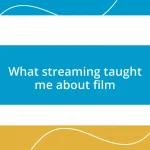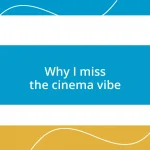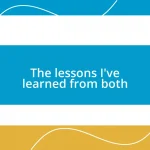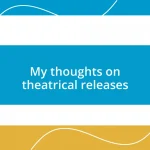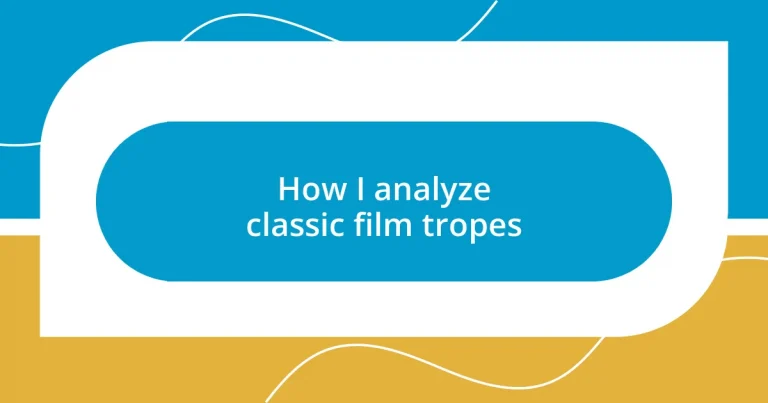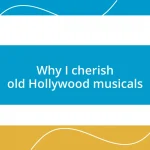Key takeaways:
- Classic film tropes reflect universal human experiences, evolving over time to influence societal perceptions, particularly regarding gender roles.
- Analyzing film tropes enhances appreciation of storytelling and critical thinking, revealing deeper connections to cultural values and personal experiences.
- Character archetypes, such as the “hero’s journey” and “damsel in distress,” shape narratives and invite viewers to reflect on their own lives and challenges.
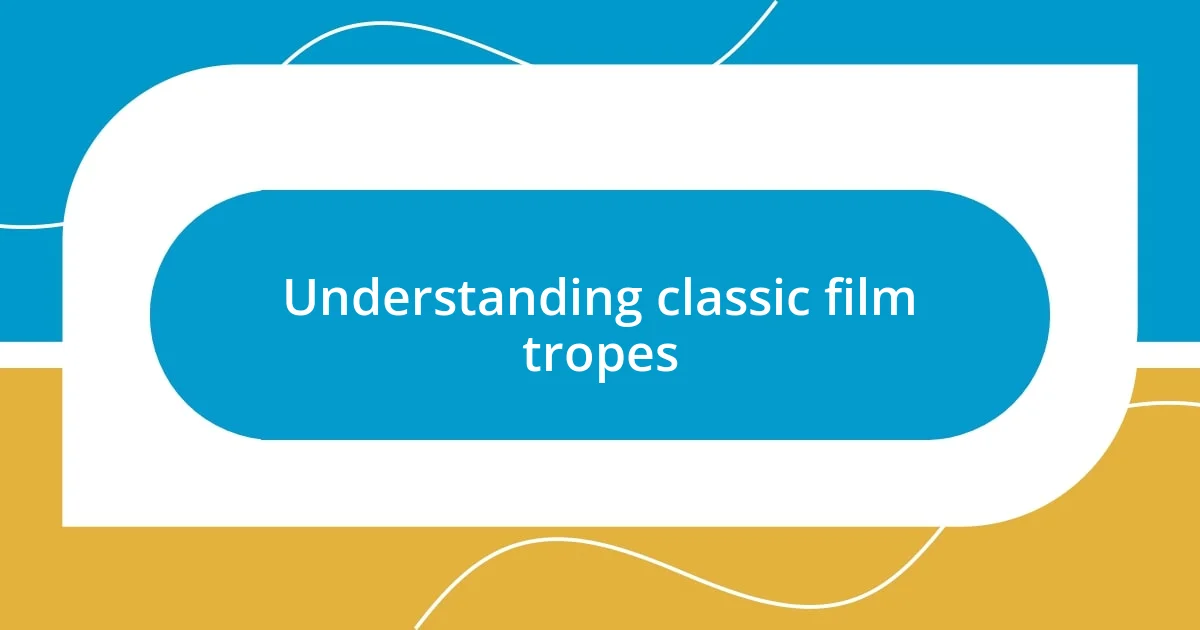
Understanding classic film tropes
Classic film tropes are the fundamental building blocks of cinematic storytelling. When I watch an old movie, like “Casablanca,” I can’t help but notice the recurring themes, like the love triangle and the heroic sacrifice. These elements resonate deeply with audiences because they reflect universal human experiences; haven’t we all experienced love that comes with difficult choices?
What’s fascinating is the way these tropes can evolve over time. I remember first encountering the “damsel in distress” trope in films from the 1930s, which felt dated and problematic when I revisited them later in life. It made me ponder: how do these familiar scenarios shape our perceptions of gender roles? Seeing these patterns helps me appreciate how filmmakers have tried to challenge or reinforce societal norms with each new generation.
In examining these tropes, it’s essential to consider not just what they say about the characters, but also about the times in which they were made. For instance, the “buddy cop” duo has transformed drastically from films in the ’80s to today’s more diverse representations. Each viewing invites me to explore how these narratives not only entertain but also reflect our changing values and beliefs. It’s a thrilling journey to decode the layers behind what we see on screen!
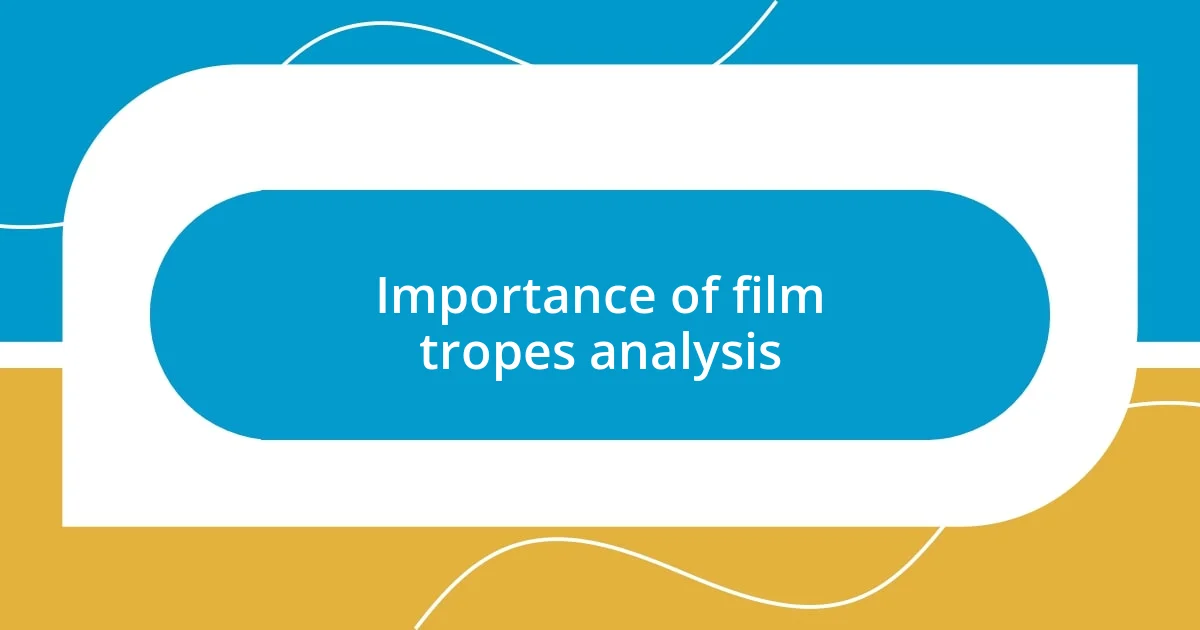
Importance of film tropes analysis
Understanding the importance of analyzing film tropes can dramatically enrich our viewing experience. I remember watching “The Wizard of Oz” and initially dismissing the “journey home” trope as a simple narrative device. However, on a deeper analysis, I realized it resonates with anyone who has ever felt lost and yearned for belonging. Suddenly, the story felt more profound, connecting my personal experiences with the broader human condition.
Conducting a thorough analysis of these patterns not only enhances our appreciation of classic films but also sharpens our critical thinking skills. I vividly recall discussing “Psycho” with friends and how the “bad mother” trope initially seemed easy to critique. But as we dove deeper, examining how it reflects societal fears of femininity and motherhood, it opened my eyes to the complex interplay between film and culture. Engaging in such discussions enriches my understanding of both the film and my own perspectives.
Moreover, analyzing these tropes helps us recognize and question the narratives we encounter today. When I watched “Pulp Fiction,” it struck me how the nonlinear storytelling challenged traditional narrative structures. Reflecting on this experience led me to ponder: how have these film tropes influenced contemporary storytelling in today’s media landscape? This kind of inquiry adds another layer to our appreciation of cinema.
| Key Benefits of Film Tropes Analysis | Examples of Film Tropes |
|---|---|
| Enhances appreciation of storytelling | Hero’s journey |
| Fosters critical thinking | Villain’s redemption |
| Encourages cultural reflection | Damsel in distress |
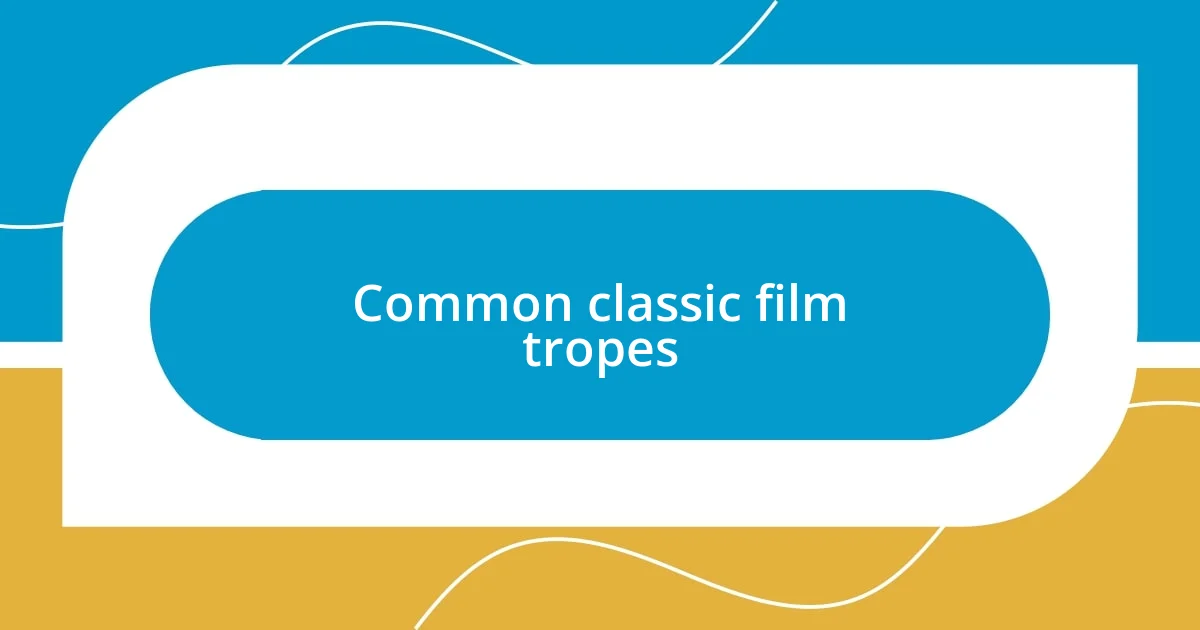
Common classic film tropes
Classic film tropes are often like old friends—familiar yet surprising in their nuances. I remember watching “Gone with the Wind” and being struck by the “love conquers all” trope, which played out in such a grand, sweeping manner. It opened my eyes to how these themes can shape our expectations and emotional responses, creating narratives that linger long after the credits roll.
Some of the most common classic film tropes include:
- The love triangle: A staple in romantic dramas that adds conflict and tension.
- The heroic sacrifice: Characters giving up their happiness for a greater cause, often resonating with audiences’ sense of heroism.
- The wise mentor: Guiding the protagonist, this figure often embodies experience and wisdom.
- The come-from-behind victory: A narrative arc that inspires viewers, showing that perseverance pays off.
- The tragic flaw: Flaw in the hero that leads to their downfall, making their journey relatable and poignant.
Reflecting on these tropes, I often find myself pondering how they mirror our own lives. The “imperfect protagonist” trope is one that resonates with me deeply, as I sometimes feel my own flaws define my journey just as much as my strengths do. It’s interesting to see how these motifs not only tell stories but also invite us to reflect on our struggles and victories in everyday life.

Analyzing narrative structure in films
Analyzing narrative structure in films unveils how stories are stitched together to create compelling viewing experiences. I distinctly remember watching “The Sixth Sense” and being taken aback by the way the plot tightly wove in foreshadowing and red herrings. It got me thinking: how do filmmakers construct these narratives to keep us guessing, and what techniques do they use to tie everything together?
One of the most striking elements of narrative structure is the rise-and-fall rhythm, which often mirrors our emotional journey as viewers. Take, for example, the classic three-act structure—exposition, climax, and resolution. The first time I noticed this was in “Star Wars.” The journey Luke Skywalker takes not only sets the stage for the action but also speaks to larger themes of destiny and growth. Recognizing this structure made me appreciate the delicate balance these filmmakers maintain between plot progression and emotional payoff.
Diving deeper into narratives, I find myself pondering how pacing influences our investment in the story. In “A Clockwork Orange,” the pacing felt discordant, intentionally creating a sense of unease. It left me questioning, what role does pacing play in shaping our perceptions of characters? I believe it’s essential because it aligns our emotional state with the film’s tone, enhancing our overall engagement with the material. Each narrative is meticulously crafted to evoke specific feelings, making every moment count in the story.
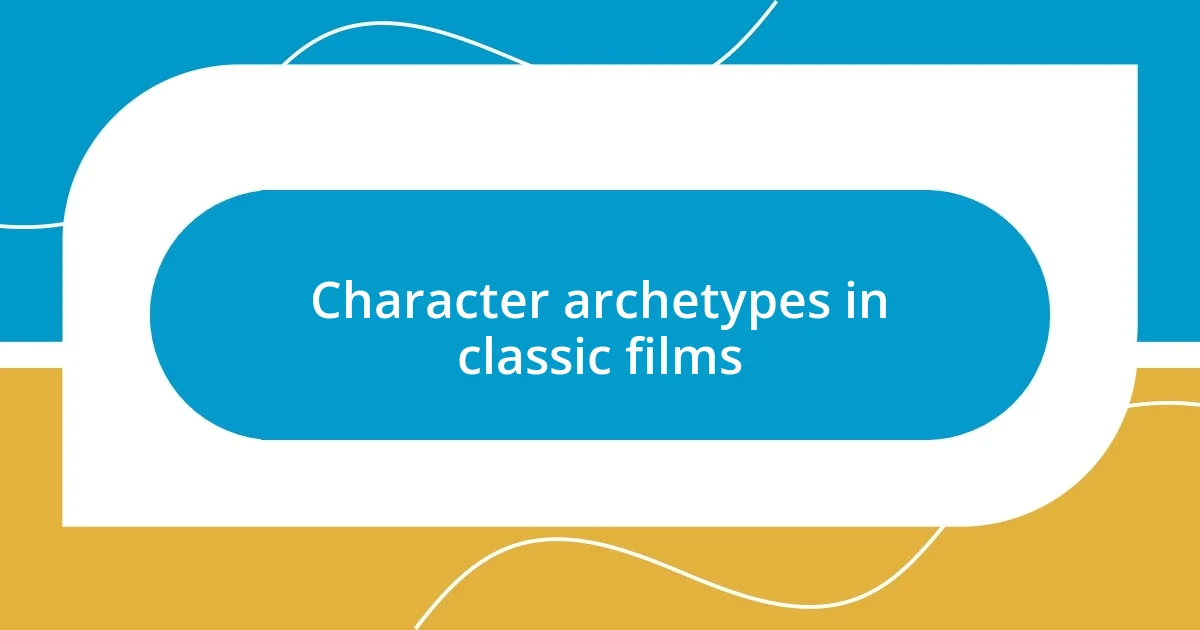
Character archetypes in classic films
Character archetypes in classic films serve as the building blocks of storytelling, effortlessly guiding the audience through a familiar landscape. I’ve always found the “hero’s journey” archetype particularly compelling. For instance, in “The Wizard of Oz,” Dorothy’s transformation from an innocent girl to a brave figure fighting for her friends resonates with me on a personal level. It reminds me of my own journey through challenges, where I’ve had to discover my inner strength.
The “damsel in distress” archetype often evokes mixed feelings. While characters like Princess Leia in “Star Wars” display strength, I sometimes feel this trope oversimplifies the female experience. Growing up, I admired Leia for her fierce spirit, yet I can’t help but wonder—why are women often cast in these roles? Their stories can remind us of resilience, but they could also delve deeper into characters that drive their own narratives instead of waiting to be saved.
On the other hand, the “comic relief” character shines a light on the importance of humor amidst darker themes. I remember chuckling at the antics of characters like Timon and Pumbaa in “The Lion King.” Their wit not only provided laughs but also broke the tension when the story got too heavy. It gets me thinking—aren’t we all a little like these comic figures in our own lives? Sometimes, the ability to find levity in serious situations can be just as heroic as facing fears head-on. When I reflect on these archetypes, it becomes clear that they are more than mere roles; they breathe life into stories that connect with our humanity.
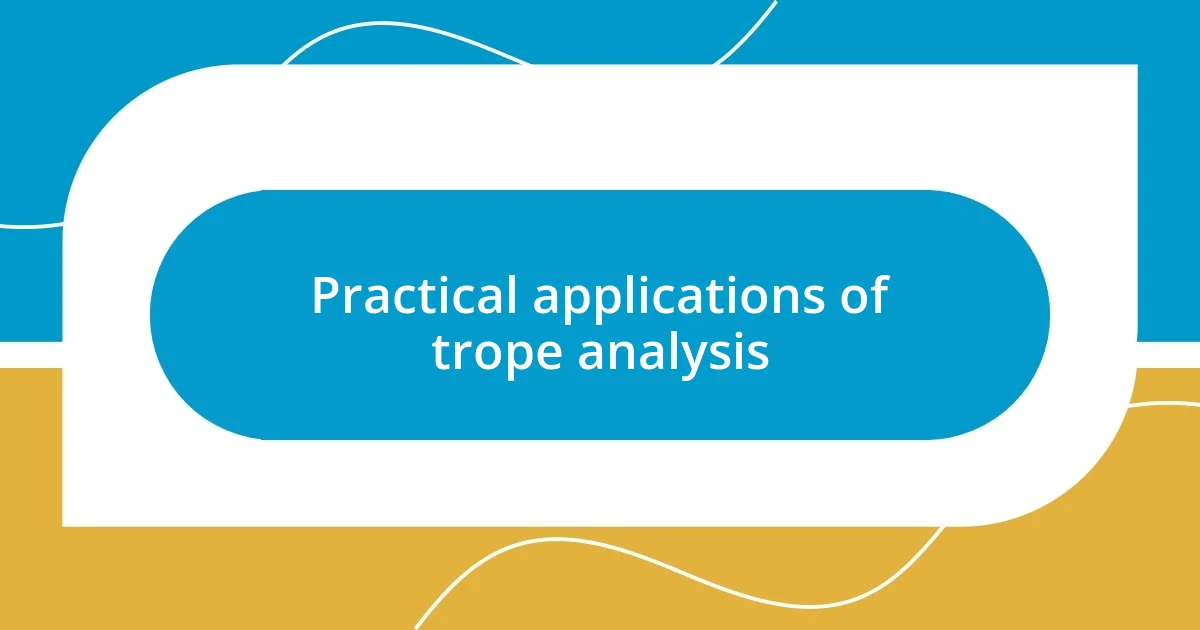
Practical applications of trope analysis
Understanding the practical applications of trope analysis can significantly enhance our viewing experience. For instance, when I rewatched “Jaws,” I couldn’t help but notice how the “unstoppable monster” trope amplified the suspense. Recognizing these familiar patterns not only enriches my appreciation for the craft but also sharpens my ability to anticipate and engage with the narrative on a deeper level.
In my exploration of films like “Casablanca,” I found myself drawn to how the “forbidden love” trope plays a pivotal role in character development. This made me reflect on my own experiences with love and loss. Have you ever felt that tension? It adds layers to the narrative, allowing viewers to connect emotionally and consider their own life choices through the characters’ struggles. The more I analyze these tropes, the more I see how they resonate with universal human experiences.
Moreover, analyzing tropes opens the door to critical discussions about representation and perspective in filmmaking. When I examined the portrayal of the “mentor” character in various films, I realized that not all mentors inspire positively. This realization led me to reflect on the mentors I’ve had and the lessons they’ve imparted. How do our mentors shape us, and do we always recognize their influence? Exploring these questions fosters a more nuanced understanding of character dynamics and the stories they tell.

